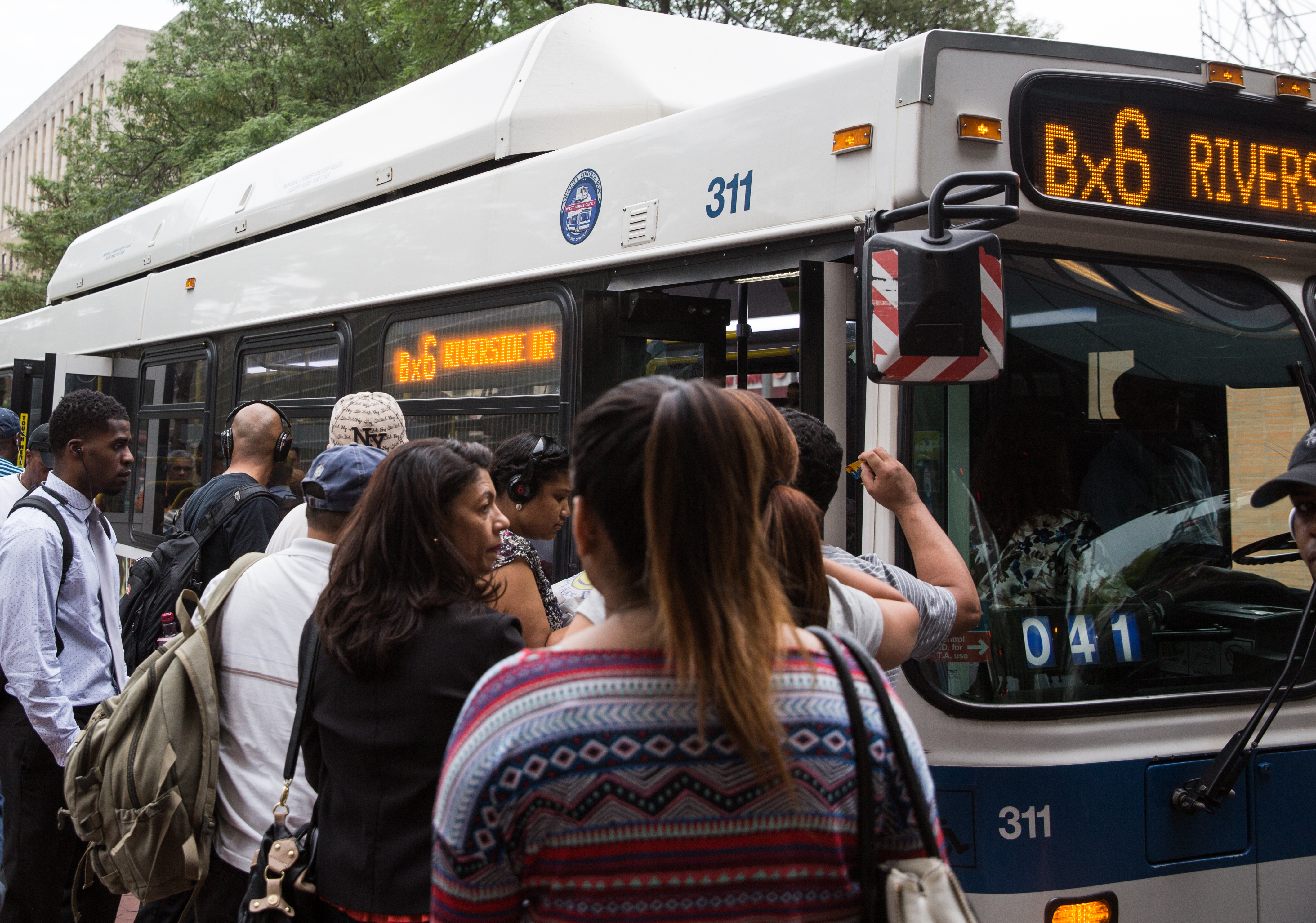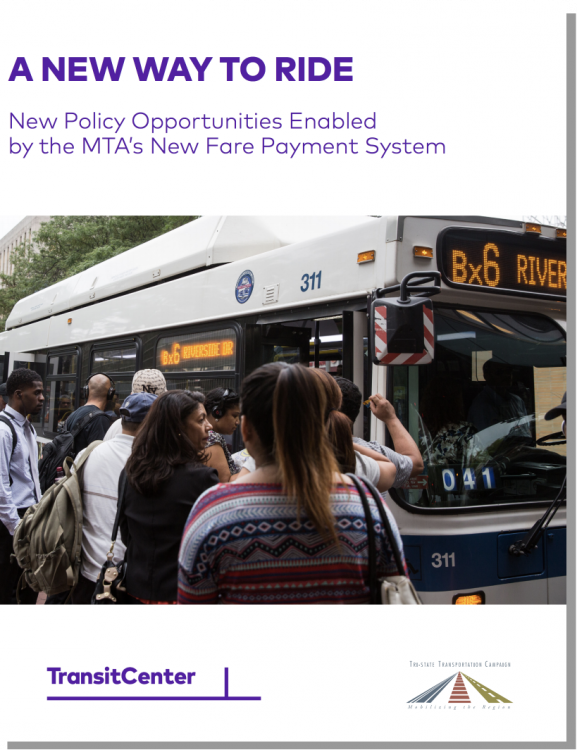
This morning, TransitCenter and the Tri-State Transportation Campaign released a new report and letter urging the MTA board to ensure MTA’s new fare payment system is used to its fullest to make the agency’s transit systems as convenient and affordable to use as possible.
When the Metropolitan Transportation Authority (MTA) introduced the MetroCard in 1994, it had the potential to be a significant upgrade over the token system in use at the time. Yet it took years and substantial external pressure to translate the MetroCard’s potential into free bus-to-subway transfers and unlimited-ride passes—policies that seem inevitable in hindsight. Now, after nearly twenty-five years as the MTA’s primary fare payment medium, it’s clear the MetroCard has far exceeded its useful life.
Soon the MTA will join its peers in London, San Francisco, and many other cities with adoption of a new fare payment system (NFPS). The system will offer riders diverse fare payment options, including contactless credit or debit cards, digital wallets like Apple Pay or Google Wallet, and a new MTA-issued fare card.
Adoption of the NFPS is an opportunity to pursue policies that can make transit faster, easier to understand, and fairer for the nearly nine million riders who rely on the MTA every day. The authority must put its riders first from the beginning by immediately adopting the full range of policies enabled by this technology.
In our report, we recommend three categories of low-cost policy and technological advances pioneered elsewhere that the MTA should adopt as part of its new fare payment system in order to improve riders’ daily commutes:
- Make Bus Boarding Seamless: Allowing bus riders to board through any door and eliminating on-board cash fare payment speeds the boarding process and helps keep buses reliably on schedule.
- Guarantee Riders Pay a Fair Price: Through a policy known as fare capping, a single fare option for transit and commuter rail travel, and new partnerships with emerging mobility providers, riders can choose the best transportation mode for their trip and know they’ll pay a reasonable price.
- Enhance Service Information: By refining its data collection and sharing practices, the MTA can provide accurate, real-time service and station information to riders.
By embracing these and other best practices, the MTA can make its transit systems as convenient and affordable to use as possible. After years of watching other cities leapfrog the antiquated MetroCard system, New Yorkers deserve no less.
Check out these recommendations in our report, “A New Way to Ride.”
 On the Brink: Will WMATA’s Progress Be Erased by 2024?
On the Brink: Will WMATA’s Progress Be Erased by 2024?
The experience of being a WMATA rider has substantially improved over the last 18 months, thanks to changes the agency has made like adding off-peak service and simplifying fares. Things are about to get even better with the launch of all-door boarding later this fall, overnight bus service on some lines starting in December, and an ambitious plan to redesign the Metrobus network. But all of this could go away by July 1, 2024.
Read More A Bus Agenda for New York City Mayor Eric Adams
A Bus Agenda for New York City Mayor Eric Adams
To create the “state-of-the-art bus transit system” of his campaign platform, Mayor Adams will have to both expand the quantity and improve the quality of bus lanes. We recommend these strategies to get it done.
Read More